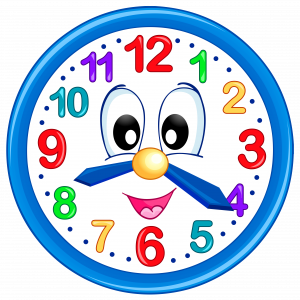
“Pie In The Sky” by sallysetsforth is licensed under CC BY-NC-SA 2.0
The readings this week all focused on online teaching and learning design, and open education. Honestly, I have been struggling to get my ideas together on these because they seem so advanced for my little world of kindergarten. There may be useful thinking in them for post secondary education. I can even see how they can be rolled into secondary school. Elementary school seems like it would be different though. In elementary school, distance learning would be synonymous with home schooling. There are different reasons parents would choose home schooling for their children. Some wish to protect their child from a perceived negative school environment or bullying interactions with peers. Some wish to include their family’s own religious or moral perspective. Some believe they can provide a higher quality of education. Some are trying to accommodate the special needs of their child. Some are needing to overcome geographical challenges such as living in remote regions or travelling out of the country. I am certain there are more reasons but these are the ones that come to mind. Since the parent is teaching the child, who does the distance learning teacher design lessons for, the child or the parent? I think in the past, it would have had to have been designed for parents to execute in the form of work books, readers, instructions for parents to use in teaching topics to the child. Now with technology, there are new possibilities.
Through new technologies, young students can access learning with video, audio, and interactive computer games. Instead of delivering a big box of instructions and work books, parents can find everything they need through links online. It is possible for teachers to conduct assessments through video conferencing. This, obviously, necessitates access to digital technology and wifi in the first place and also, the ability to use it fairly confidently. I suspect there will still be families who prefer the box of work books. Some families will be able to share on-campus or field trip activities, or synchronous meetings with other DL peers, and others may not. In designing learning, do teachers design one program that is flexible for a range in levels of interaction or a separate program for non-digital participants?
In a video (K-9 Programs, n.d.) promoting the South Island Distance Education School (SIDES) in School District #63  for Kindergarten to Grade 9, one of the speakers points out that a “home facilitator” is necessary and, “If you’re looking less for home schooling but you’re more for schooling at home then SIDES might be a really good fit for you.” The other speaker adds that, “If you’re one of those parents that can find the teachable moments and you take advantage of them…SIDES is a definitely good fit for you,” plus “SIDES parents…have a different mindset and they want that involvement.” This implies that the success of the student relies on the mindset and involvement of the “home facilitator” and that, if the student is ultimately unsuccessful, it may be because the program was not a good fit. It does not appear that the program is in any way customized for the learner, other than offering some flexibility in the pacing and some tutoring available. I wonder if their is an asynchronous meeting space for the “home facilitators” to share their ideas and experiences. In naming the parents home facilitators and recognizing they are responsible for catching the teachable moments, it seems the SIDES teachers would also concede that they share the #Openteach model‘s roles (Ni She et al., 2019) as facilitators and content experts.
for Kindergarten to Grade 9, one of the speakers points out that a “home facilitator” is necessary and, “If you’re looking less for home schooling but you’re more for schooling at home then SIDES might be a really good fit for you.” The other speaker adds that, “If you’re one of those parents that can find the teachable moments and you take advantage of them…SIDES is a definitely good fit for you,” plus “SIDES parents…have a different mindset and they want that involvement.” This implies that the success of the student relies on the mindset and involvement of the “home facilitator” and that, if the student is ultimately unsuccessful, it may be because the program was not a good fit. It does not appear that the program is in any way customized for the learner, other than offering some flexibility in the pacing and some tutoring available. I wonder if their is an asynchronous meeting space for the “home facilitators” to share their ideas and experiences. In naming the parents home facilitators and recognizing they are responsible for catching the teachable moments, it seems the SIDES teachers would also concede that they share the #Openteach model‘s roles (Ni She et al., 2019) as facilitators and content experts.
Do the teachers in the SIDES video develop their lessons according to the detailed learning theories and models in this week’s readings? I doubt it because I doubt that I would. As in the traditional classroom settings, the amount of prep time they get would not be conducive to that depth of analysis. Knowing they are both coming from classroom situations where so much of teaching is automatic and instinctual, I suspect they would stick with what they know works. I would assume they have learned how best to adapt their classroom lessons with the advice of a mentor or predecessor. I wonder what online resources they share with parents. If they download content from the internet to their course site, does “fair dealing” still apply? Do they credit all their sources? A good set of Open Educational Resources (OERs) would be helpful for SIDES Kindergarten teachers but they’re in the same boat as the rest of us. Where do we find them and do we want to sift through a limited collection with an unsatisfying search function when we can use Google, Pinterest, or Teacher Pay Teachers for something that more closely meets our needs? OERs are a great idea but need more time to become truly helpful for teachers to use. As long as “Fair Dealing” applies, why would we bother? Also, if we have to apply Wiley’s 4Rs: Reuse, Rework, Remix, and Redistribute (Wiley, 2007) anyway, why not jump straight to the fifth R (Retain) in the first place. Why not look at the ideas out there and make our own resource combining all the best features? Then we can put it anywhere we like.
Speaking of great ideas, when a student goes away on a five week vacation, would it not be great if we could stay connected to that child through video conferencing and online lessons. It may be, but how critical is it to miss kindergarten? Generally, we just ask parents to have them practise their numbers and alphabet, read stories everyday, and keep a journal. There are no guarantees that they will. The parents may not be that great on follow through or they may not have that home school mindset. Still it would be an interesting experiment. I have a student going off in February so I think I may have to give it a try. Will I check that my lessons align with one of the frameworks discussed by Canole, Dyke, Oliver, and Seale (Conole et al., 2004) ? Who has the time?
References
Conole, G., Dyke, M., Oliver, M., & Seale, J. (2004). Mapping pedagogy and tools for effective learning design. Computers & Education, 43(1), 17–33. https://doi.org/10.1016/j.compedu.2003.12.018
K-9 Programs. (n.d.). Retrieved January 18, 2020, from https://www.sides.ca/en/k-9-programs.html
Ni She, C., Farrell, O., Costello, E., Brunton, J., Donlon, E., Trevaskis, S., & Eccles, S. (2019). Teaching online is different: Critical perspectives from the literature. https://doi.org/10.5281/zenodo.3479402
Wiley, D. (2007, August 8). Open Education License Draft. Iterating toward Openness. https://opencontent.org/blog/archives/355


Recent Comments